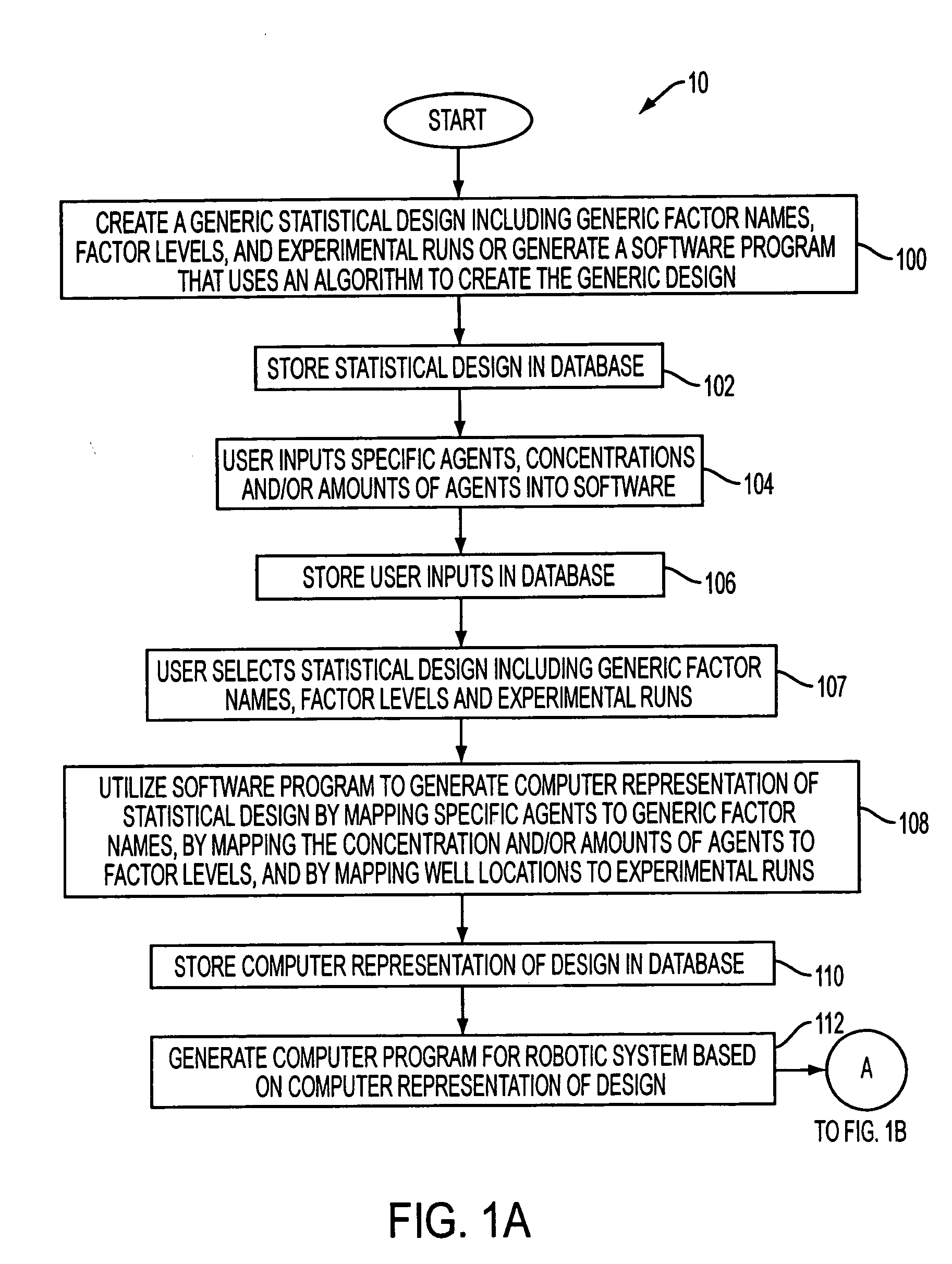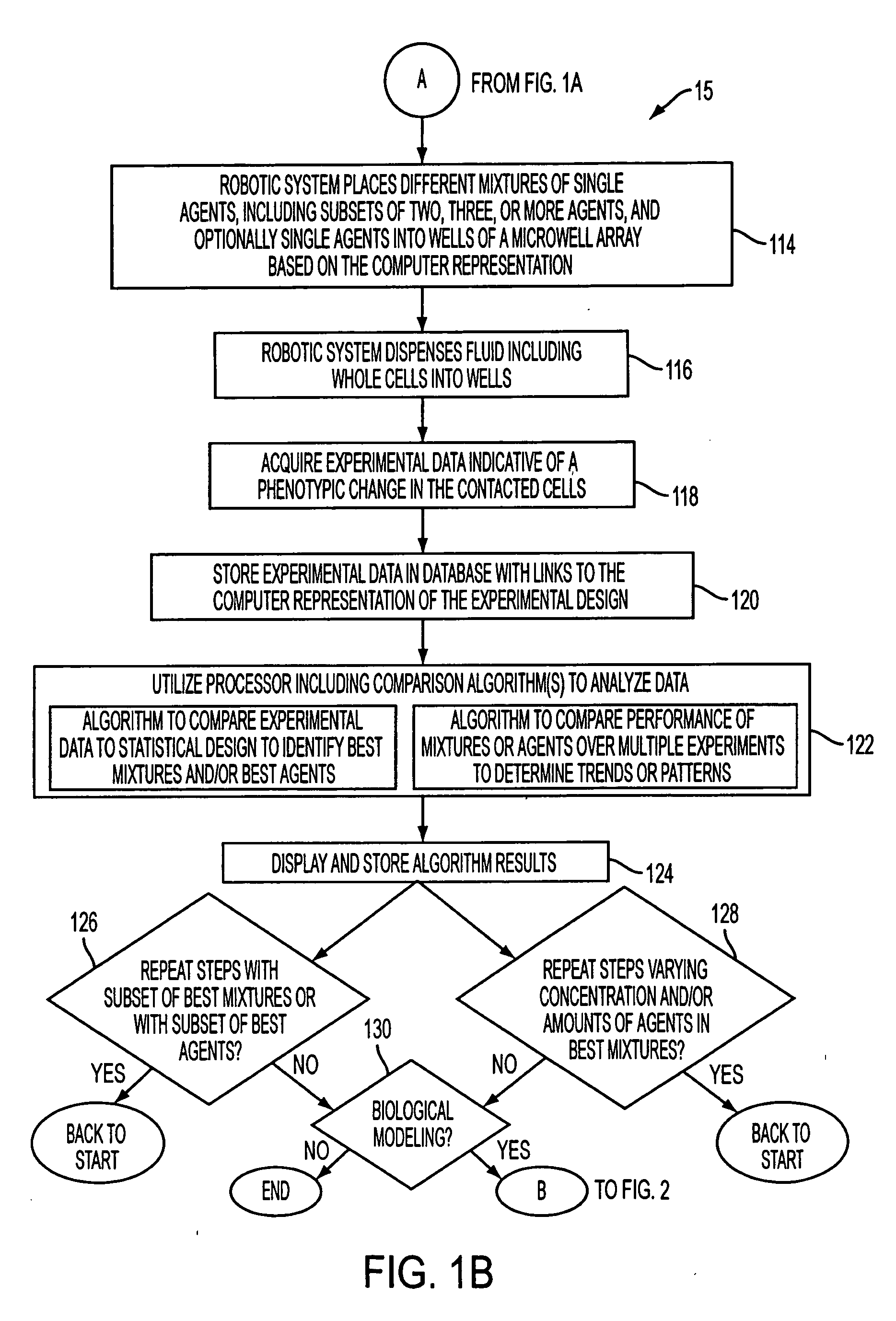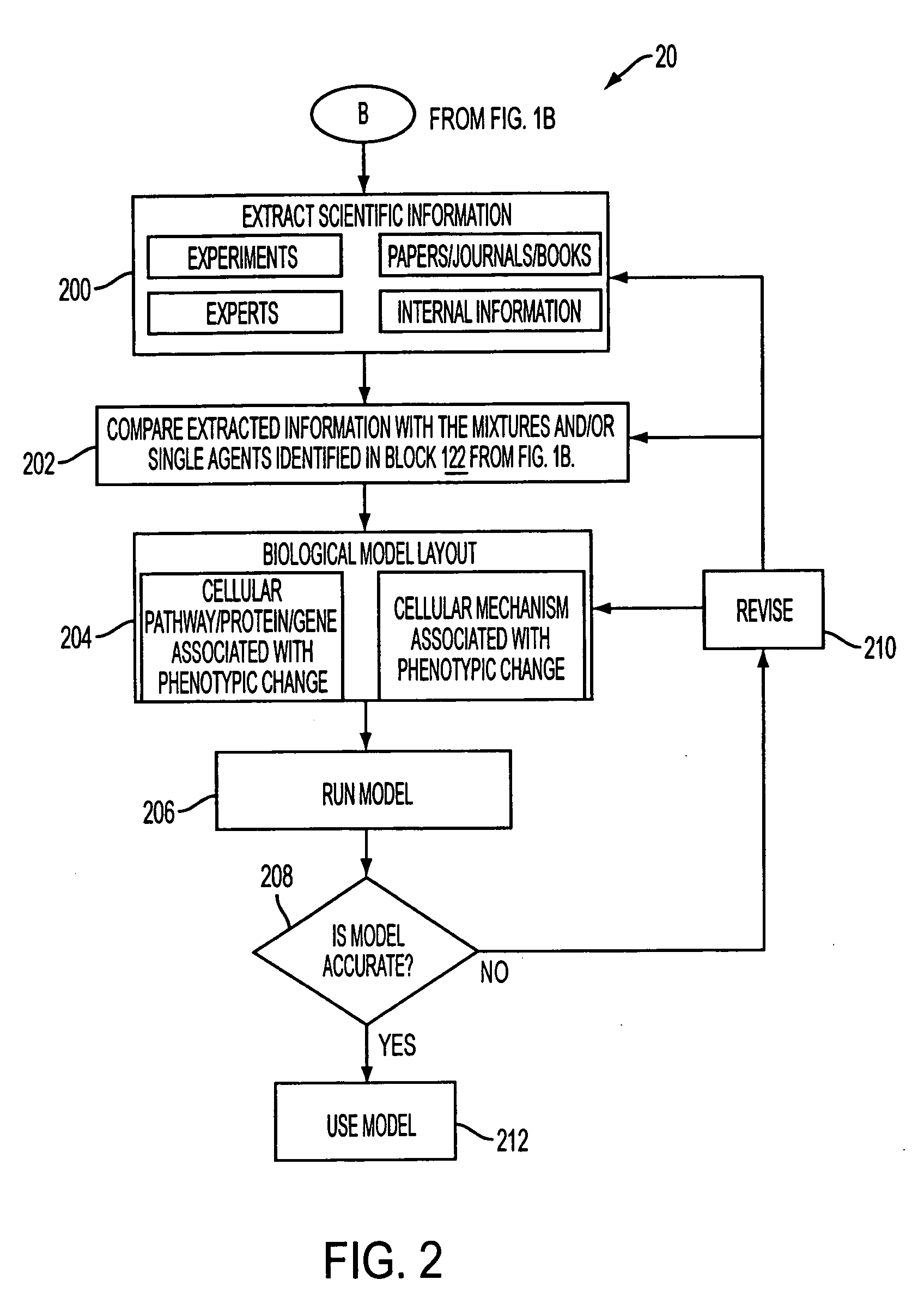Automated media optimization technology
a media optimization and automatic technology, applied in the field of high throughput screening methods, can solve the problems of tedious task of finding the right growth effector, coating itself does not support cell adhesion,
- Summary
- Abstract
- Description
- Claims
- Application Information
AI Technical Summary
Benefits of technology
Problems solved by technology
Method used
Image
Examples
example 1
Coupling of Hyaluronic Acid to an Amine-Rich Tissue Culture Surface
[0170] An oxygen / nitrogen plasma is used by Becton Dickinson Labware to create PRIMARIA™ tissue culture products. In particular, oxygen / nitrogen plasma treatment of polystyrene products results in incorporation of oxygen- and nitrogen-containing functional groups, such as amino and amide groups. For this experiment, HA was coupled to the amine-rich surface on PRIMARIA™ multi-well plates through carboxyl groups on HA using carbodiimide bioconjugates chemistries well known in the art, such as those described in “Protein Immobilization: Fundamentals and Applications” Richard S. Taylor, Ed. (M. Dekker, NY, 1991) or as described in copending, commonly owned U.S. application Ser. No. 10 / 259,797, filed Sep. 30, 2002.
example 2
Coupling of ECM Proteins to Hyaluronic Acid
[0171] ECM agents were covalently attached to the HA polymer tethered to the culture surface from Example 1. In particular, aldehyde groups were created on HA by oxidation using the periodate procedure described in E. Junowicz and S. Charm, “The Derivatization of Oxidized Polysaccharides for Protein Immobilization and Affinity Chromotography,”Biochimica et. Biophysica Acta, Vol. 428: 157-165 (1976). This procedure entailed adding sodium periodate to a solution of HA, thus activating the terminal sugar. Subsequently, the activated HA was coupled to the amine groups on the ECM proteins using standard immobilization chemistries, such as those described in “Protein Immobilization: Fundamentals and Applications” Richard F. Taylor, Ed. (M. Dekker, NY, 1991) or copending U.S. application Ser. No. 10 / 259,797, filed Sep. 30, 2002.
example 3
Use of a Statistically Designed Experiment (Mixture Design) to Screen 10 Different ECM Proteins Simultaneously
[0172] In the present example, the statistical design is a mixture design. This design was used to identify pairs of factors, or single factors that had a positive effect on a cell response, and allows us to look at interactions between two ECMs. In this example, 10 single ECMs, each representing a single “factor” are used to created ECM mixtures for placement into the wells of a 96-well plate as shown in FIG. 7. The ECMs covalently attach to biocompatible polymers on the culture surface (see Examples 1 and 2). It is noted that without a statistical design for the experiment, it would take 210 (1024) single experiments, or eleven 96-well plates, to test each of the 10 ECMs together with the others against a given cell-type.
[0173] In this example, a group of 10 adhesion ligands was selected and a 96-well array was chosen as the format for this screen. To eliminate border ef...
PUM
 Login to View More
Login to View More Abstract
Description
Claims
Application Information
 Login to View More
Login to View More - R&D
- Intellectual Property
- Life Sciences
- Materials
- Tech Scout
- Unparalleled Data Quality
- Higher Quality Content
- 60% Fewer Hallucinations
Browse by: Latest US Patents, China's latest patents, Technical Efficacy Thesaurus, Application Domain, Technology Topic, Popular Technical Reports.
© 2025 PatSnap. All rights reserved.Legal|Privacy policy|Modern Slavery Act Transparency Statement|Sitemap|About US| Contact US: help@patsnap.com



